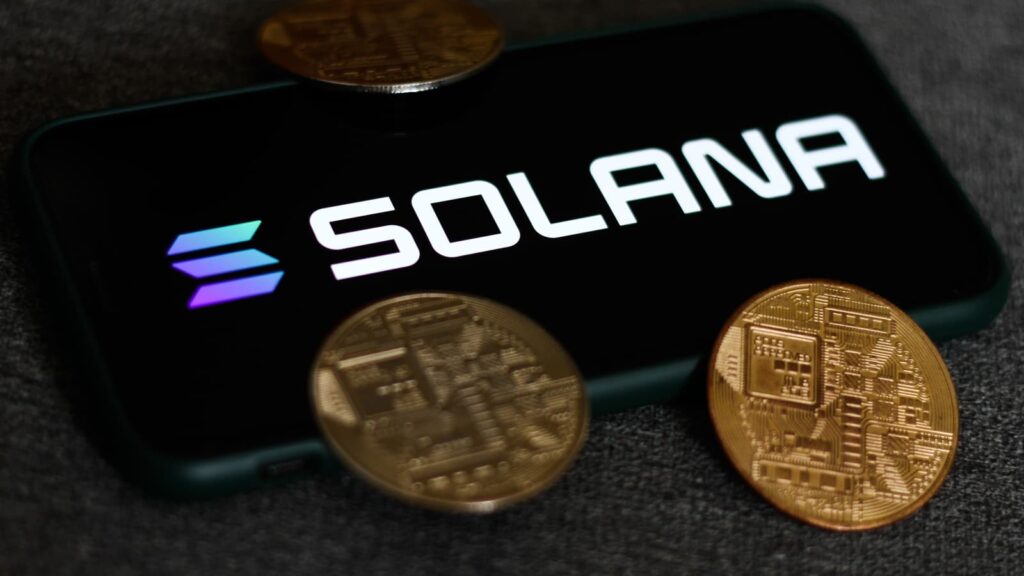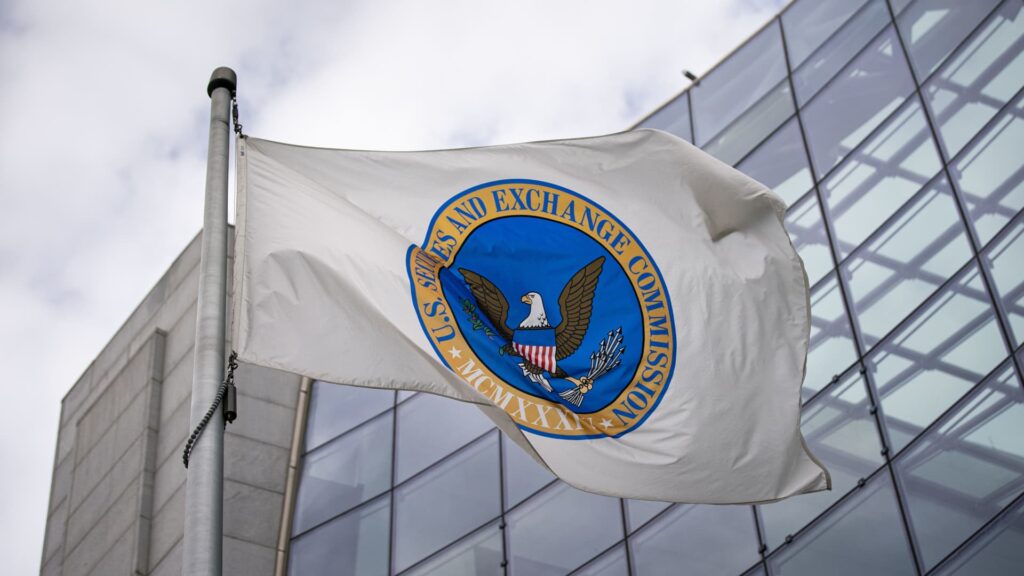ARK Invest’s latest research report for 2023 emphasizes Bitcoin’s exceptional historical performance compared to major assets and recommends an institutional portfolio allocation of up to 19.4% to optimize risk-adjusted returns.
Released on January 31st, the annual report explores the convergence of blockchain technology, artificial intelligence, energy storage, and robotics.
A substantial portion of the report focuses on Bitcoin portfolio allocation, tracing its performance since inception and scrutinizing its metrics over the past three years.
Long-term Performance:
ARK’s data reveals Bitcoin’s remarkable performance over extended periods, outshining traditional assets. Over seven years, Bitcoin boasted an annualized return averaging 44%, while other major assets averaged just 5.7%.
The report notes that investors with a “long-term time horizon” benefited significantly from holding Bitcoin for extended periods, as its historical volatility often masked its long-term profitability.
Optimal Allocation:
The report delves into the volatility and return profiles of traditional asset classes, suggesting that a portfolio aiming for maximized risk-adjusted returns would have allocated 19.4% to Bitcoin in 2023.
This represents a significant change over the past decade, with the optimal allocation varying from 0.5% in 2015 to 19.4% in 2023 on a five-year rolling basis.
Potential Valuations:
ARK’s research contemplates a hypothetical scenario in which institutional investments from the $250 trillion global investable asset base follow the recommended 19.4% Bitcoin allocation.
If just 1% of global assets were invested, Bitcoin’s price could reach $120,000 per BTC. Allocating the 4.8% average maximum Sharpe ratio from 2015 to 2023 could drive Bitcoin’s price to $550,000.
Following ARK’s 19.4% allocation, Bitcoin could reach an astounding $2.3 million per coin.
ARK’s research draws on empirical market data to justify its 19.4% Bitcoin allocation for risk-adjusted returns, a shift from previous years’ recommendations.
In January 2022, figures like Ray Dalio and Bill Miller suggested a portfolio allocation of 1% to 2% in Bitcoin.
A year earlier, JPMorgan’s investment strategists proposed a 1% portfolio allocation to Bitcoin as a hedge against fluctuations in traditional assets like stocks, bonds, and commodities.
ARK Invest’s report underscores Bitcoin’s evolving role as a viable and potentially lucrative asset class in institutional portfolios, reflecting the growing acceptance and recognition of cryptocurrencies in the broader financial landscape.
In 2023, Core Scientific achieved a remarkable milestone by emerging as the largest publicly listed cryptocurrency mining company in North America.
Their feat involved the mining of an impressive 19,274 Bitcoins, valued at an astounding $812 million. This achievement was unveiled in a recent announcement made on January 31st.
Core Scientific’s mining operations span across various states in the United States, including Georgia, Kentucky, North Carolina, North Dakota, and Texas.
Within these regions, they successfully mined 13,762 Bitcoins. Furthermore, their clients and customers collectively contributed to the impressive total by mining an additional 5,512 Bitcoins throughout the year.
This achievement firmly established Core Scientific as the foremost Bitcoin miner in North America.
To accomplish this, Core Scientific operated a staggering 209,000 Bitcoin miners, a combination of owned and co-located units, amassing a formidable energized hash rate of 23.2 exahashes per second at their data centers in 2023.
Impressively, the company also disclosed its annual mining report, highlighting a reduction in power consumption at their data centers.
In December 2023, they delivered 480 megawatt hours to local grid partners and a grand total of over 131,000 megawatt-hours throughout the year.
The process of Bitcoin mining involves solving intricate computational puzzles, essential for proof-of-work, which validates and adds new blocks to the Bitcoin blockchain.
Miners employ specialized hardware and software to generate cryptographic hashes that meet specific transaction criteria.
READ MORE: Bank of Japan and Government Collaborate on Digital Yen, Targeting 2024 Resolution
As a reward for their efforts in verifying transactions and adding them to the blockchain, miners receive a certain amount of Bitcoin, currently set at 6.25 BTC per mined block.
Core Scientific’s journey as a Bitcoin mining company has been nothing short of a rollercoaster ride.
In December 2022, they found themselves filing for Chapter 11 bankruptcy amid a challenging crypto market characterized by a prolonged bearish trend that saw Bitcoin prices plummet to new yearly lows.
However, in June 2023, the company presented its Chapter 11 bankruptcy plan, signaling a strong determination to make a comeback.
This bankruptcy filing allowed Core Scientific to continue its operations as stakeholders worked towards a restructuring plan.
Fast forward to December 2023, and the company announced its intentions to exit bankruptcy proceedings and relist its shares for public trading.
The culmination of this plan occurred on January 27th when Core Scientific successfully relisted on the Nasdaq stock exchange.
This turnaround story exemplifies the resilience and potential for growth within the Bitcoin mining industry, driven by the continuous rise in the value of Bitcoin over the years, attracting both private and public firms to engage in mining operations across multiple data centers.
Celsius, the crypto lending platform, has successfully emerged from Chapter 11 bankruptcy proceedings in the United States.
The company is now gearing up to distribute a staggering $3 billion in both cryptocurrency and fiat to its creditors. Additionally, Celsius is set to embark on a new venture in the form of a Bitcoin mining company, Ionic Digital.
In an official press release on January 31st, Celsius announced that Ionic Digital would be managed by Hut 8, with Matt Prusak, Chief Commercial Officer of Hut 8, at the helm.
The purpose of Ionic Digital is to ensure the continued delivery of recoveries to Celsius’ creditors.
The company also revealed its intention to take Ionic Digital public, pending the necessary approvals.
A remarkable 98% of Celsius’ creditors voted in favor of the bankruptcy exit plan.
This development comes after an 18-month-long hiatus on withdrawals, initiated in June 2022, and the subsequent bankruptcy filing a month later.
Celsius managed to bolster the amount of cryptocurrency available for distribution to creditors by approximately $250 million, primarily through the conversion of altcoins into Bitcoin (BTC) or Ethereum (ETH) and through previous settlements.
Celsius will be winding down its operations and discontinuing its mobile and web applications by February 28th.
READ MORE: Bitcoin Exchange Outflows Challenge Bearish Predictions, Fueling Bullish Sentiment
Creditor distributions will be facilitated through popular platforms like PayPal, Venmo, and Coinbase. Some creditors have already submitted claims forms on Coinbase’s X platform.
David Barse and Alan Carr, members of a special board that guided Celsius through its bankruptcy proceedings, expressed their satisfaction with the company’s successful exit.
They noted that many had assumed Celsius would follow in the footsteps of other crypto lenders that filed for bankruptcy around the same time.
They credited their achievement to the tremendous teamwork that made it possible.
Celsius’ decision to pause withdrawals in 2022 was aimed at improving its capacity to fulfill withdrawal obligations, especially after the significant drop in the value of its native token, Celsius (CEL), during that year.
The bankruptcy process also involved Celsius settling $4.7 billion in fines with regulatory bodies such as the United States Federal Trade Commission, the Department of Justice, the Securities and Exchange Commission, and the Commodity Futures Trading Commission.
In a related development, the company’s former CEO, Alex Mashinsky, was arrested and charged by federal prosecutors with various financial fraud allegations, including manipulating the price of CEL and misleading Celsius customers.
Mashinsky, who maintains his innocence, is currently out on a $40 million bond and is awaiting trial in September.
On January 31, United States Federal Communications Commission (FCC) Chairwoman Jessica Rosenworcel made a significant announcement proposing that calls featuring artificial intelligence (AI)-generated voices should be deemed illegal.
Such calls would be subject to the regulations and penalties outlined in the Telephone Consumer Protection Act (TCPA).
This proposal comes in the wake of a recent incident where AI technology was used to create a false message, imitating the voice of U.S. President Joe Biden.
In this fabricated message, residents of New Hampshire were advised against participating in the state’s primary election.
The motive behind these automated messages was to interfere with the upcoming 2024 presidential election. However, the state’s attorney general’s office promptly denounced these calls as misinformation.
Rosenworcel’s proposal seeks to put an end to robocalls, in line with the TCPA, a law enacted in 1991 to regulate automated political and marketing calls that are made without the recipient’s consent.
The primary objective of the TCPA is to shield consumers from unwanted and invasive communications, such as unsolicited telemarketing calls and automated messages.
The proliferation of such calls in recent years has raised concerns, as technology has evolved to the point where it can convincingly mimic the voices of celebrities, political figures, and even family members.
By adopting this proposal, the FCC intends to provide state attorneys general across the country with additional tools to pursue those responsible for malicious robocalls and enforce legal consequences.
Back in November 2023, the FCC initiated a Notice of Inquiry to gather information about addressing illegal robocalls and the potential role of AI in this issue.
READ MORE: Bank of Japan and Government Collaborate on Digital Yen, Targeting 2024 Resolution
The inquiry specifically sought input on how AI could be involved in scams and voice impersonations, and whether it should be subject to TCPA regulation.
Additionally, the FCC aimed to gain insights into the positive uses of AI, such as identifying and preventing illegal robocalls.
The White House also weighed in on AI-related matters, releasing a fact sheet on January 29 that outlined key actions taken in response to President Biden’s executive order on AI issued three months earlier.
The fact sheet highlighted “substantial progress” toward the president’s goal of protecting Americans from the potential risks posed by AI systems.
One pressing concern in the realm of AI-generated content is deepfakes, which have been on the rise.
The World Economic Forum, in its 19th Global Risks Report, drew attention to the adverse consequences of AI technologies, particularly deepfakes.
The Canadian Security Intelligence Service, Canada’s primary national intelligence agency, expressed concerns about disinformation campaigns conducted on the internet using AI deepfakes.
In response, U.S. lawmakers have called for legislation that would criminalize the production of deepfake images, spurred by instances like the widespread circulation of explicit fake photos of Taylor Swift.
This underscores the growing need to address the challenges posed by AI-generated content and the importance of robust regulation and enforcement.
A dormant Ethereum-based protocol, Jupiter, experienced a sudden surge in its token price due to a striking coincidence involving Solana-based exchange aggregator Jupiter’s $700 million airdrop.
Just hours before the launch of Solana-based Jupiter’s JUP airdrop on January 31st, the Ethereum-based JUP token with the same ticker saw its price skyrocket by more than 430%, only to plunge back down shortly after.
According to CoinMarketCap data, Ethereum-based JUP surged from $0.005 on January 30th to $0.026 on January 31st, eventually settling at its current price of $0.007.
The Ethereum-based Jupiter protocol, launched in 2017, was designed for creating and hosting decentralized applications (DApps).
However, it is now labeled as “no longer active” on its official website. In contrast, Solana-based Jupiter operates as a decentralized exchange aggregator, enabling users to swap, place limit orders, and deploy dollar-cost average buying strategies for tokens within the Solana network.
The unexpected price surge of Ethereum-based JUP occurred just hours before the Solana-based Jupiter initiated its massive $700 million airdrop to early users, which turned out to be one of the largest airdrops ever on the Solana network, successfully executed without any issues, according to a Solana Foundation executive.
READ MORE: Bitget Study Finds 84% of Investors Expect BTC Will Reach New All-Time High in Next Bull
Austin Federa, the head of strategy at the Solana Foundation, praised the Solana network’s performance during the airdrop.
He highlighted that the network handled a total of 2.5 million non-vote transactions within the first two and a half hours of Jupiter claims going live. F
edera also noted that while Solana gas fees briefly spiked during the claiming frenzy, they remained much lower than Ethereum’s exorbitant fees, with a humorous mention of a fee reaching “astronomical” levels at approximately $1.02.
Despite the successful airdrop, some users of third-party apps like Phantom Wallet and Solflare experienced issues during the first hour of the event, attributed to remote procedure call (RPC) nodes rather than Solana’s core network infrastructure.
The base layer of Solana performed well throughout the high user activity period.
Additionally, a pseudonymous seventeen-year-old crypto investor, known as X handle notshort, claimed to have earned over $1 million from the Solana-based JUP airdrop.
Data from Dune Analytics indicated that 41% of eligible wallets had claimed their JUP tokens, with a total of 566 million JUP, constituting 57% of the entire airdrop allocation, being claimed since the airdrop’s launch on January 31st at 10:00 am Eastern Time.
In a recent development, authorities have seized approximately $1.7 billion worth of Bitcoin as part of an investigation into an alleged money laundering scheme involving a former restaurant worker who attempted to purchase a £30 million mansion in London.
The individual at the center of this case is Jian Wen, a Chinese national who acquired British citizenship in 2018.
According to reports by Sky News on January 30th, Wen was allegedly recruited to assist Zhimin Qian in the process of laundering funds obtained from an investment fraud scheme that took place in China between 2014 and 2017.
Qian had entered the United Kingdom using a false identity and sought Wen’s help in cleaning the ill-gotten gains.
Before her involvement with Qian, Jian Wen had been employed at a Chinese restaurant in southeast London and lived in a room beneath the restaurant.
She introduced Qian as her “boss,” claiming he worked in the international jewelry business.
Prosecutor Gillian Jones clarified that Wen was not directly involved in the fraudulent activities conducted by Qian.
However, Wen stands accused of converting Bitcoin into various assets, including cash, luxury items, and real estate, all on behalf of Qian.
READ MORE: Solana-Based Jupiter Exchange Dominates Trading Charts with $480 Million Volume in 24 Hours
One notable attempt was her endeavor to purchase a seven-bedroom mansion in Hampstead, London, equipped with a swimming pool, valued at £30 million.
Unfortunately, her plans were thwarted as she couldn’t provide a legitimate source for the cryptocurrency assets she intended to use for the acquisition.
Subsequently, authorities conducted a raid on a residence rented by Wen and Qian, where they seized numerous devices containing over 61,000 BTC, amounting to approximately $1.7 billion, based on 2021 valuations.
Initially, Wen claimed that the cryptocurrency she held had been mined.
However, she later altered her statement, asserting that it was a “love present,” substantiating this with a deed indicating that she had received 3,000 BTC from Qian.
Jian Wen is currently on trial at the Southwark Crown Court, facing three counts of money laundering spanning from October 2017 to January 2022.
She vehemently denies all charges against her. Meanwhile, Zhimin Qian has managed to evade authorities and remains at large, adding intrigue to this ongoing case.
On January 30th, tech giants Microsoft and Alphabet, the parent company of Google, disclosed their earnings for the previous quarter, showcasing remarkable developments in artificial intelligence (AI) and cloud computing.
Throughout the past year, AI has dominated the tech industry, culminating in a global market size of $196.6 billion in 2023.
Microsoft and Google emerged as leaders in AI development, both introducing advanced chatbots.
Microsoft’s end-of-year results were marked by a surge in sales, largely attributed to their AI tools. Their revenue climbed 18% year-on-year from September to December, surpassing $60 billion.
Satya Nadella, Microsoft’s Chairman and CEO, emphasized the company’s AI progress, stating, “We’ve moved from talking about AI to applying AI at scale.
By integrating AI throughout our tech stack, we are attracting new customers and enhancing productivity across all sectors.”
These results propelled Microsoft to become the world’s most valuable public company, with a market value of $3 trillion, surpassing Apple.
In addition to AI, Microsoft’s cloud computing service, Azure, reported a 30% year-on-year revenue increase, exceeding industry analysts’ expectations.
The company’s Q4 profits surged by 33% year-on-year, totaling $21.9 billion. Microsoft entered 2024 by launching the pro version of its AI chatbot, Copilot, featuring custom GPT creation and Office integration.
However, the company also faced a significant copyright lawsuit against The New York Times, alongside OpenAI.
Alphabet also attributed its Q4 success to AI integrations.
READ MORE: Robert F. Kennedy Jr. and Donald Trump Unite Against Central Bank Digital Currency
Sundar Pichai, the company’s CEO, expressed satisfaction with the performance of Google Search, YouTube, and Cloud, all benefiting from AI investments and innovation.
Alphabet reported consolidated revenue of $86 billion for Q4, a 13% year-over-year increase.
Ruth Porat, President and Chief Investment Officer, emphasized Alphabet’s commitment to “durably re-engineer our cost base” to support new growth opportunities.
Despite its achievements, Google initiated the year by announcing job cuts to achieve ambitious AI-related goals.
In January 2023, the company unveiled plans to reduce its global workforce by 6%, ultimately laying off 182,381 employees worldwide by September 2023.
Nevertheless, Google’s year began with the launch of Lumiere, a realistic AI text-to-video generator.
Utilizing a time-space diffusion model, Lumiere transforms text and images into lifelike AI-generated videos, offering on-demand editing capabilities.
In summary, Microsoft and Alphabet’s recent earnings reports highlight their significant strides in AI and cloud computing, underscoring their pivotal roles in shaping the tech landscape.
Quantstamp, a decentralized finance (DeFi) security startup, has unveiled a list of the top five smart contract protocols that suffered significant losses due to exploits and malicious activities in the month of January.
These incidents collectively resulted in losses amounting to $38.9 million.
Radiant Capital was among the first victims, experiencing a loss of $4.5 million in early January due to a flash loan attack.
The attack was attributed to a “known rounding issue” in the current Compound/Aave codebase, as identified by blockchain security firm PeckShield.
Radiant promptly took action by suspending its USD Coin pool on Arbitrum to address the issue and ensure the security of user funds. Operations resumed after a thorough investigation.
Gamma Strategies faced a similar flash loan attack just hours after Radiant’s incident, resulting in the siphoning of $6.1 million from its public-facing vaults due to a code bug. To mitigate the vulnerability, Gamma temporarily halted deposits and swiftly fixed the issue.
Wise Lending experienced a loss of at least $460,000 on January 12th in a flash loan attack, involving manipulation of the price oracle used by the platform.
Remarkably, this marked the second attack on the protocol within six months, causing the depletion of 170 Ether (ETH).
READ MORE: Solana-Based Jupiter Exchange Dominates Trading Charts with $480 Million Volume in 24 Hours
On January 16th, Socket, a multichain protocol, suffered a security breach due to a vulnerability in user verification input, allowing hackers to steal nearly 2,000 ETH, valued at over $4 million.
However, Socket managed to recover 1,032 ETH (approximately $2.3 million) and reimbursed all affected users as part of its efforts to restore user funds.
Goledo Finance faced a security breach similar to Gamma’s exploit, resulting in the theft of $1.7 million on January 28th.
Negotiations with the perpetrator are ongoing, and Goledo has offered a reward for the return of the stolen funds.
The hacker’s accounts on centralized exchanges have been frozen, and Goledo is evaluating the extent of the loss to formalize a recovery strategy, with local law enforcement briefed on the situation.
Goledo has also outlined its compensation process for user asset recovery, providing a Google form for affected users to submit their claims.
The DeFi space continues to grapple with security challenges, highlighting the importance of ongoing vigilance and improvements to protect user funds.
SEC Commissioner Hester Peirce has voiced her strong opposition to the United States Securities and Exchange Commission’s (SEC) long-standing “gag rule,” which prevents defendants from criticizing the agency’s claims in the aftermath of settling enforcement actions.
In her statement issued on January 30, Peirce argued that this policy not only hinders free speech but also erodes regulatory integrity.
The 1972 “gag rule” compels defendants to refrain from making public statements that deny any allegations in the SEC’s complaint or insinuate that the complaint lacks a factual basis.
Peirce asserted that this rule is overly broad and effectively shields the SEC’s allegations from any form of criticism.
She also expressed concern about the clause that requires defendants to prevent others from denying the allegations, as it implies a broader censorship of opinions that challenge the SEC’s judgment.
Furthermore, Peirce emphasized that the “no-deny policy” is an obligatory and non-negotiable component of SEC settlements, which are the most common resolution for enforcement actions. Violating this policy can result in defendants being brought back to court by the SEC.
In 2023, the SEC witnessed a surge in crypto-related enforcement actions, with 46 cases against crypto firms and $281 million collected in penalties from settlements.
READ MORE: Robert F. Kennedy Jr. and Donald Trump Unite Against Central Bank Digital Currency
Peirce argued that the SEC’s justifications for the “gag rule” are unfounded, as prior to its adoption in 1972, the SEC had successfully settled cases for decades without imposing such restrictions.
Other federal agencies, like the Federal Trade Commission, allow settling defendants to deny allegations of wrongdoing.
Peirce contended that settling a lawsuit with the SEC is often the most economical option, given the substantial financial resources required for SEC investigations and the legal complexities of challenging the agency in court.
However, she raised concerns that the policy allows the SEC to avoid proving its claims in court and secures a “permanent silence” from defendants, which it could never achieve through litigation.
Peirce’s stance is grounded in the belief that if the SEC is confident in its investigative work and analysis, it should not require defendants to remain silent and should instead permit them the freedom to express their views after settling enforcement actions.
This, she argues, would ensure a fair and transparent regulatory environment while upholding the principles of free speech and accountability.
The Bank of Japan (BoJ) recently held its inaugural official meeting with the Japanese government to deliberate the potential development of a central bank digital currency (CBDC).
Reports from local TV channel NHK reveal that on January 26, both the government and the BoJ reached a consensus to address the legal intricacies associated with the issuance of a digital yen, with the goal of resolving these issues in the spring of 2024.
It is important to note that neither the BoJ nor the government has formally confirmed the launch of a digital yen at this point.
A definitive decision will only be made following a “national discussion,” and not before 2026.
In December 2023, the BoJ received a recommendation from an expert panel within the Ministry of Finance to expedite the issuance of a digital yen.
The panel emphasized the importance of the CBDC coexisting alongside physical cash and underscored the need for the BoJ to minimize the storage of personal data.
The BoJ successfully concluded the second phase of CBDC testing in May 2023.
READ MORE: Hong Kong’s Regulator Expedites Approval Process for Spot Bitcoin ETFs Following US SEC’s Approval
This year-long experiment involved 100,000 users and included the participation of five intermediaries, with transaction loads ranging from 500 to 3,000 transactions per second.
Following this achievement, the BoJ initiated its scheduled CBDC pilot project, focusing on evaluating the “end-to-end process flow” and establishing connections with external systems.
Despite Japan’s reputation as a predominantly cash-based society, the country maintains a favorable stance toward CBDCs.
This contrasts with the United States, where lawmakers and presidential candidates have actively opposed CBDC initiatives.
Furthermore, starting in April 2024, Japanese businesses may no longer be subject to taxes on “unrealized gains” from cryptocurrency holdings.
In Asia, there is a growing openness to CBDCs, with China already implementing its digital yuan, while countries such as Hong Kong, Singapore, Malaysia, India, and South Korea are actively researching CBDCs.
Additionally, in early January, the National Bank of Cambodia announced its intentions to introduce a CBDC in the country by the end of 2024.
The bank revealed its ongoing efforts to introduce “Lanka Pay” and “Central Bank Digital Currencies.”












